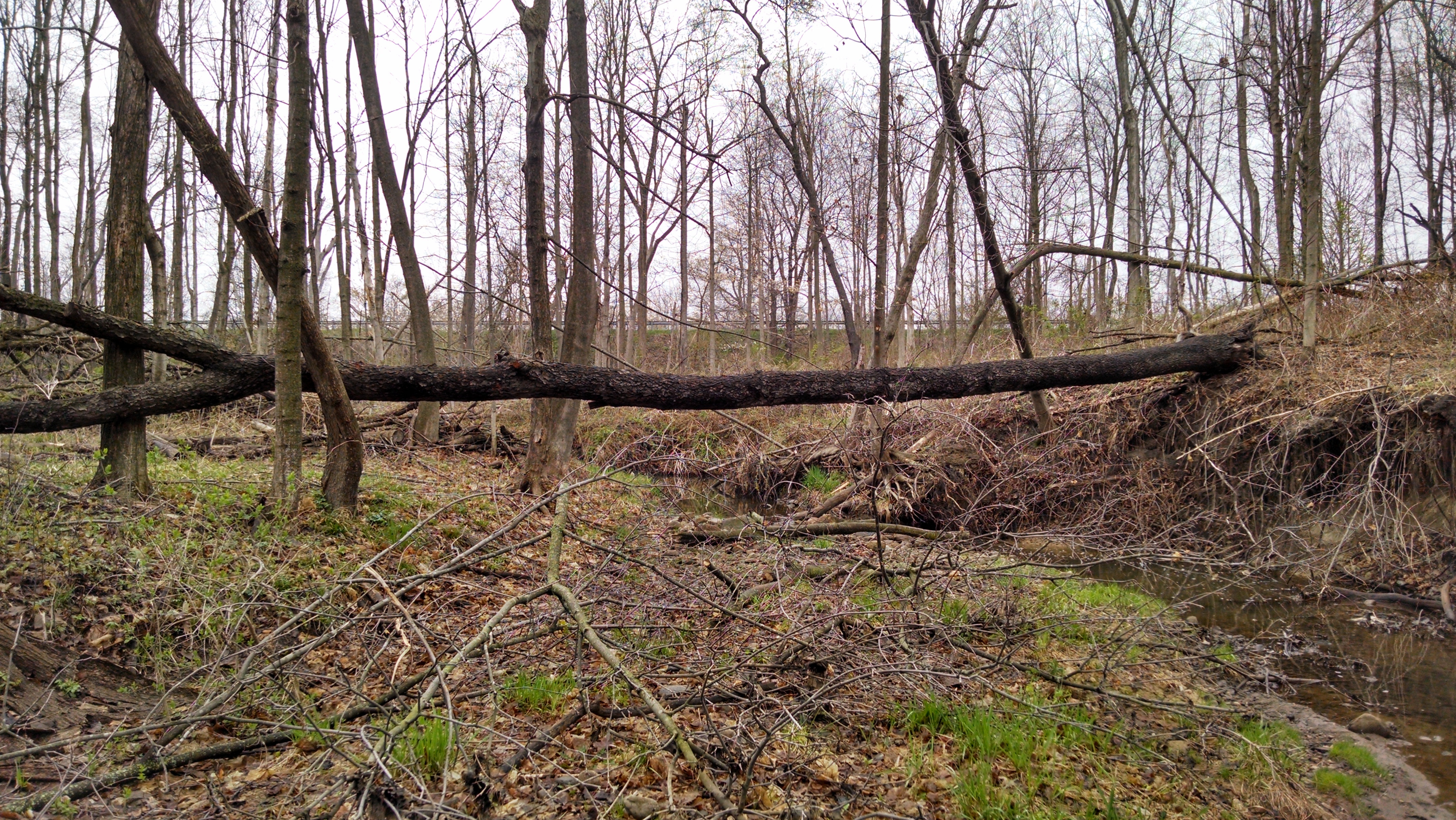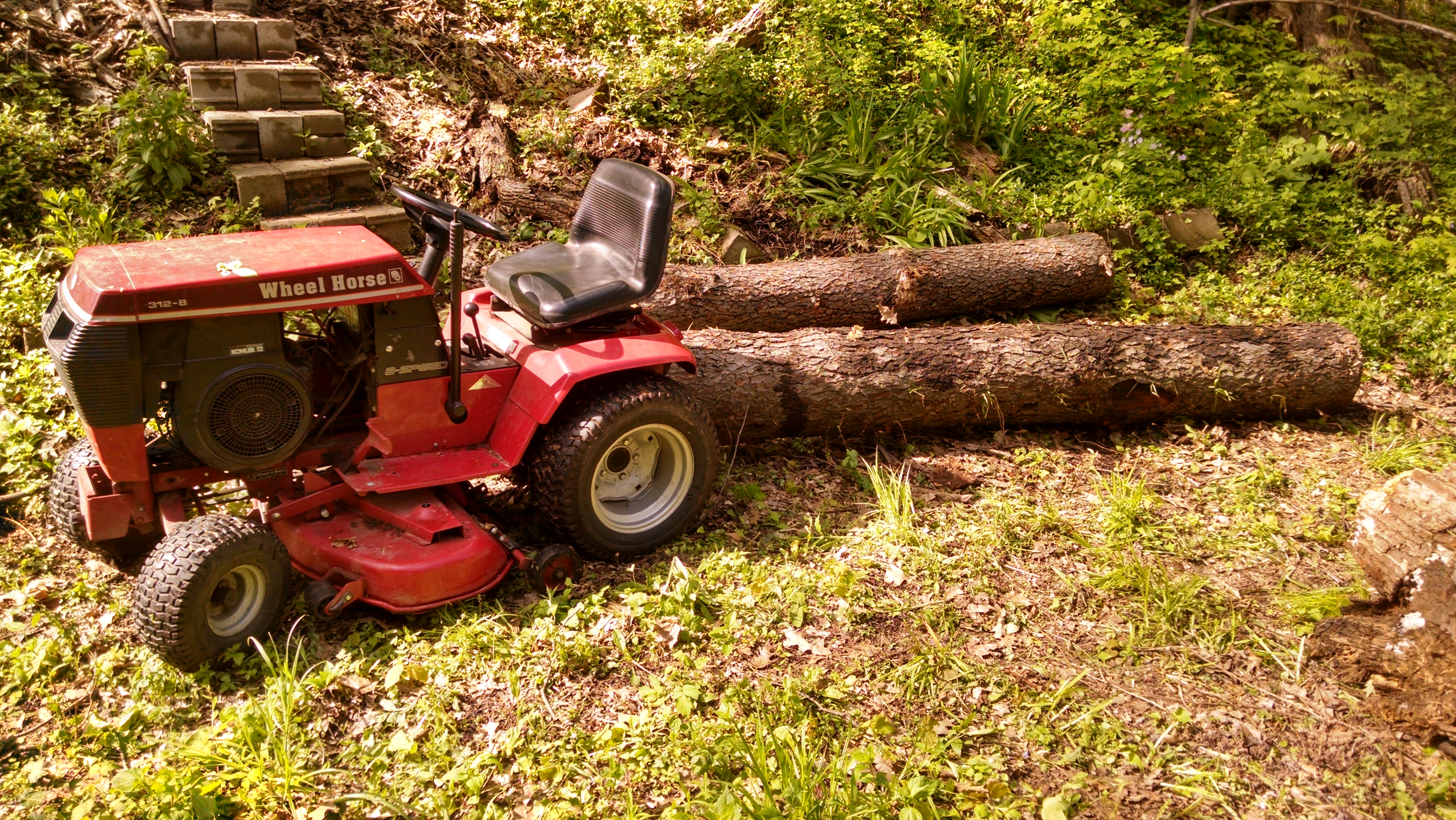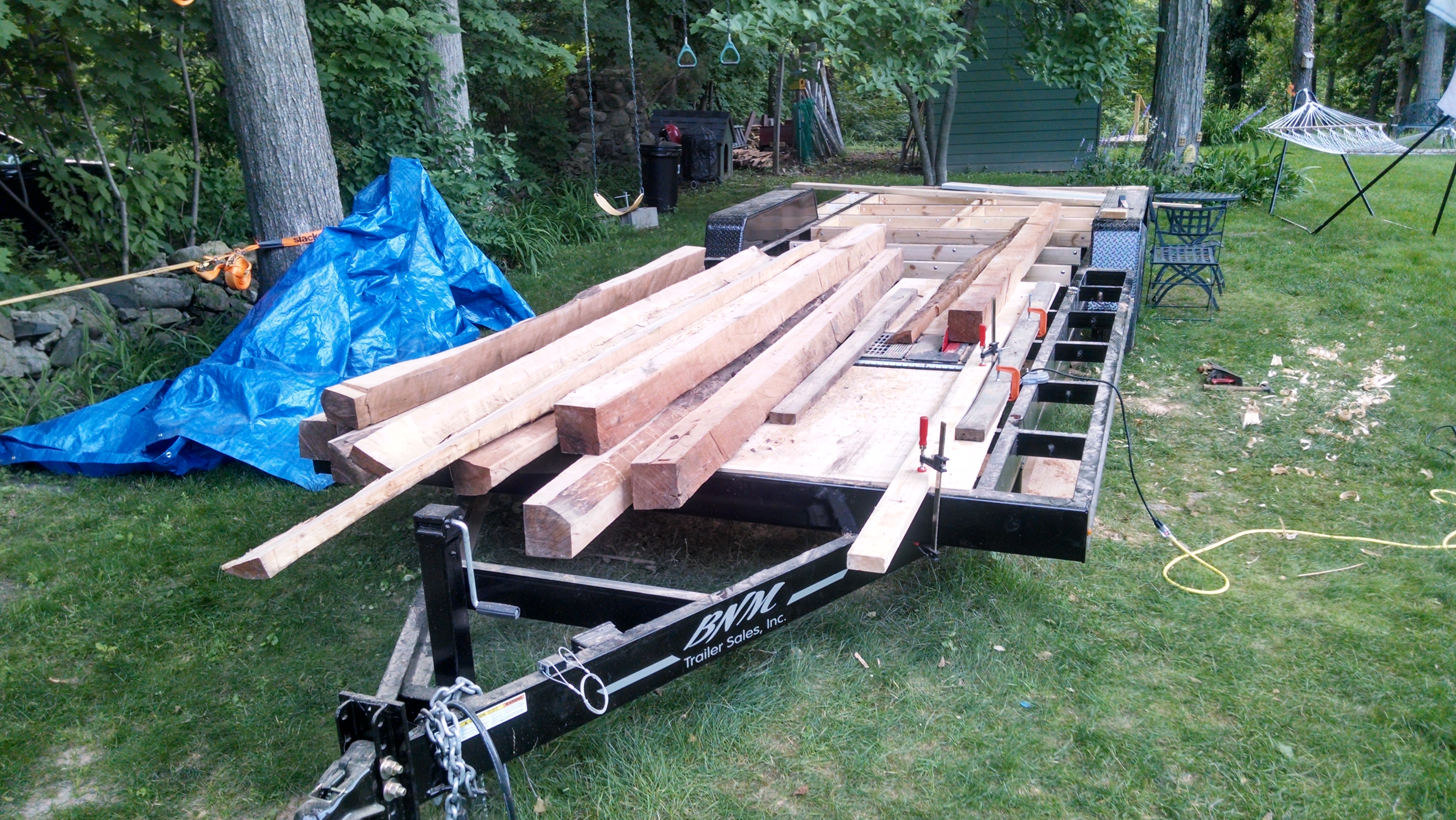The Tree
The house where I live --my in-law's house-- has a nice wooded lot behind it. They own part of it, their neighbors own part of it, their neighbor's neighbors own part... you get the idea. One day, some guys came by in a truck and got several of the owners to agree to let them harvest a few logs out of the wood lot. They promised to pay well, and the owners gave them permission. A few days later, they arrived with bulldozers and chain saws and proceeded to wreck the woodlot. They took more trees than they said they would, knocked over or cut down trees they didn't want but that were in their way, and seriously damaged the stream bank in several places, which led to erosion and resulted in the stream actually changing it's course. When people complained (after only a couple days), the workers took their equipment and left. Disappeared. Paying no one.
Anyway, that unfortunate incident left one glaring reminder of it's existence: this black cherry tree suspended across the stream in our backyard.
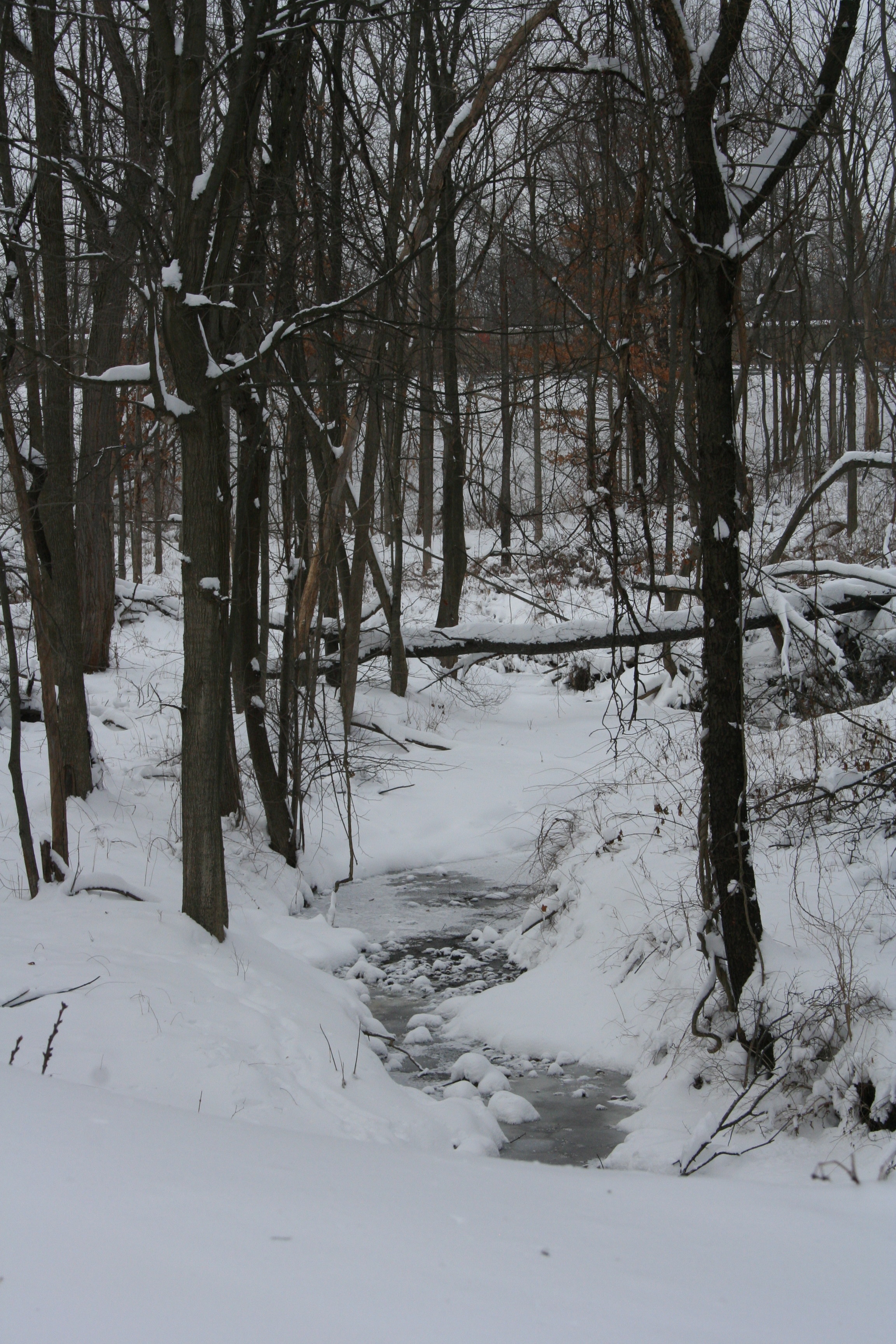 a fallen black cherry tree, across a stream in our backyard
a fallen black cherry tree, across a stream in our backyard
The tree had been partially cut then knocked over. The thieves probably would have taken it, but didn't have time. When it fell, its top got pinned between two trees on the other side, so it just hung there, never touching the ground. The tree was there all summer, fall, and winter. In spring I decided to do something about it.
It bothered me that this nice hardwood tree would just rot away. It seemed like such a waste, so I decided to harvest it.
The first thing to say about "harvesting" this fallen tree, was that it was really hard to do, and dangerous. I don't recommend anyone else try this. There is no good way to cut a tree suspended like this. When the cut finally goes through, a ton of wood is going to come crashing down at or on the cutter's feet. So I did it in a slow, indirect manner. First I cut off the tree-suspended top part in manageable chunks, then cutting through so that the suspended part itself would fall to the ground. This allowed me to stand and hold the chainsaw from a safe position. Then I stacked some of the smaller cut pieces into the stream, and levered and pulled (with a come-along) the top of the tree onto the stack, so that it was once again suspended off the ground. I could then safely cut off the top nine feet. After successfully shortening the tree, I knocked it off the stack of extras, then pushed and pulled the root end of the tree until it fell into the stream. I was finally able to safely cut the rest of the tree into two more manageable logs.
When I say manageable, I mean barely manageable. They were way too heavy to lift. They were almost too heavy to pull (with the equipment I had).
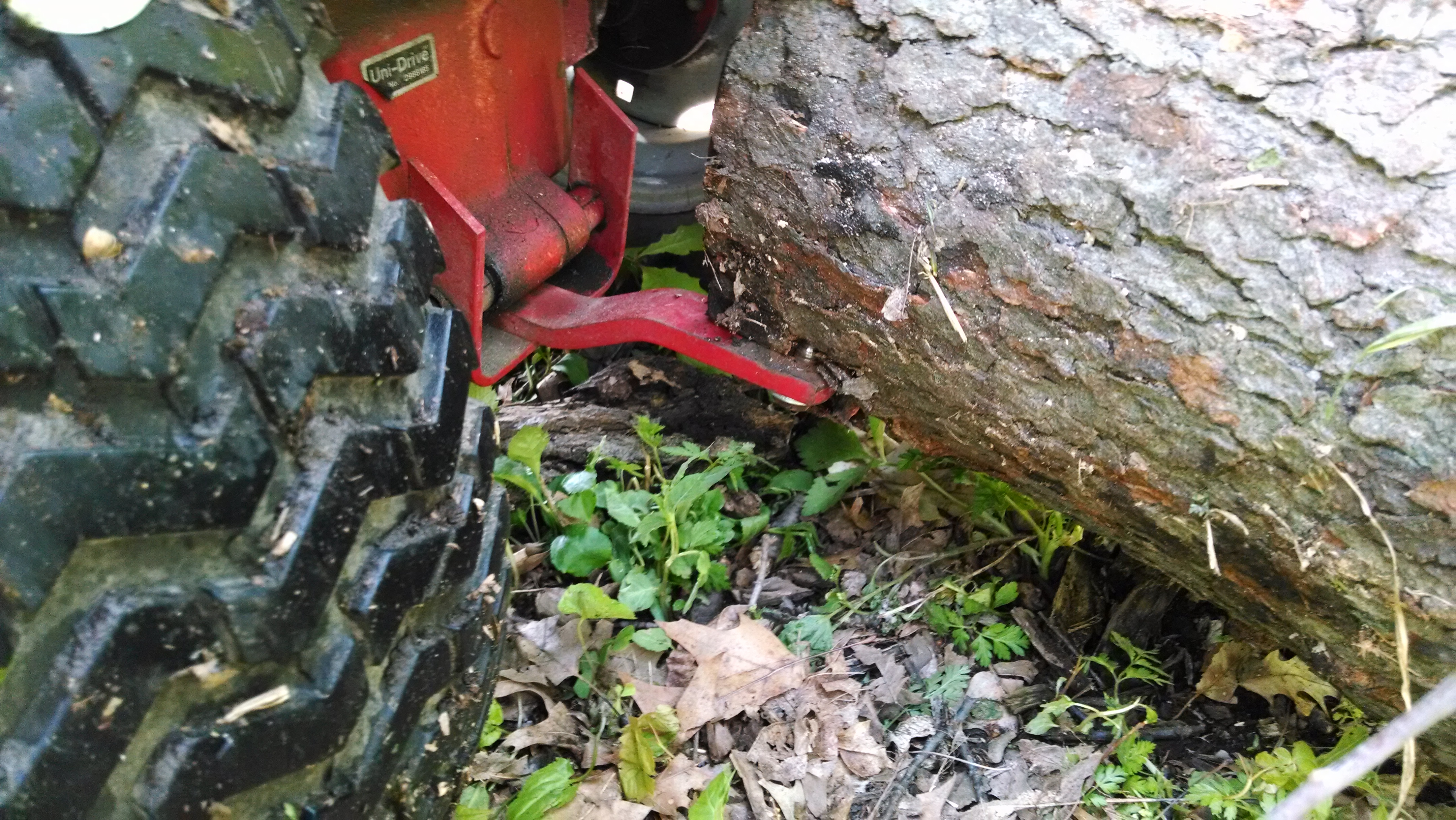 I was able to pull the first and lightest log by attaching it directly to the tongue of the lawnmower
I was able to pull the first and lightest log by attaching it directly to the tongue of the lawnmower
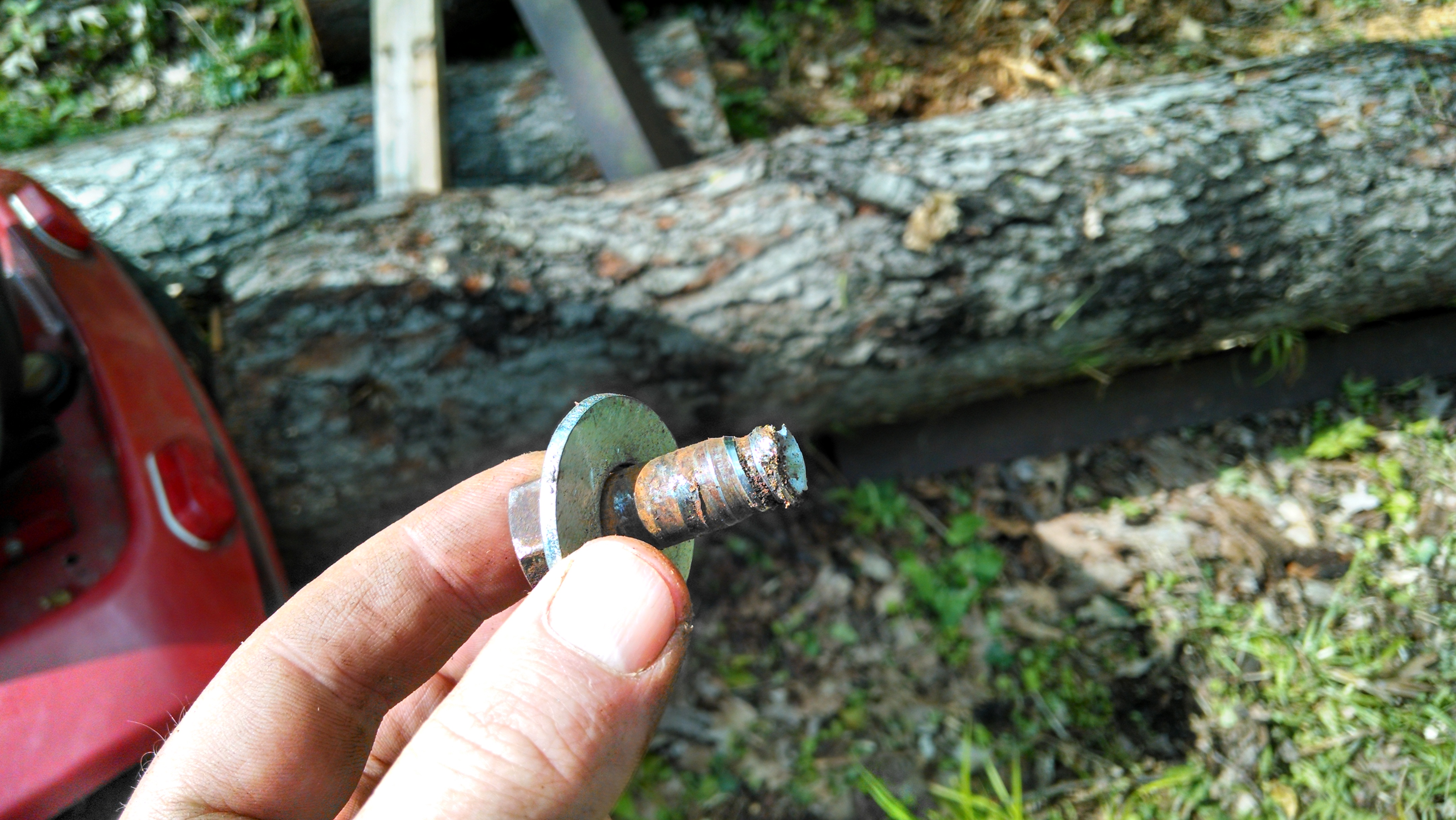 but the bolt broke when I tried to take it out, so I had to figure out a different approach for the heavier logs
but the bolt broke when I tried to take it out, so I had to figure out a different approach for the heavier logs
Eventually I got all three logs to the base of the hill and quartered them with a chainsaw. This took about an hour a log with an electric chainsaw. Then I hauled the dozen quarter logs up the hill by hand. This whole process took several hours on several days. If I had it to do over again, I wouldn't.
The plan had been to put the logs on my trailer and take them to a small local sawmill. But at some point I realized they were too long and heavy to put in my trailer (because I couldn't even get them up the hill). This realization came before I quartered the logs. Once they were quartered (when a sawmill would probably be even less interested in sawing them for me), I decided to see if I could square them off myself. The original, original idea was that I could use a few beams from this tree inside my loft and it would look boss and rustic as hell, so just squaring the logs off would have been sufficient. I eventually abandoned this idea because it was too much added weight and I felt it would make the house feel less open.
The trailer-as-sawmill worked great, honestly. A saw with a bigger blade would have been nice. It's not clear from the picture, but what I did was attach two 2x4s to the top surface of a table saw, put some sheets of plywood on top of my trailer, then set the table saw into a gap between the trailer joists. This resulted in the table surface and plywood being at the same level. Clamped the whole thing down and clamped down another 2x4 as a guide rail, and I was good to go. I didn't completely square off all of the logs, because I didn't know what I was going to do with them all, and figured why do extra work.
The better pieces of wood sat in the garage for the rest of the summer until this spring, when I turned two of the smaller ones into beams and collar ties.
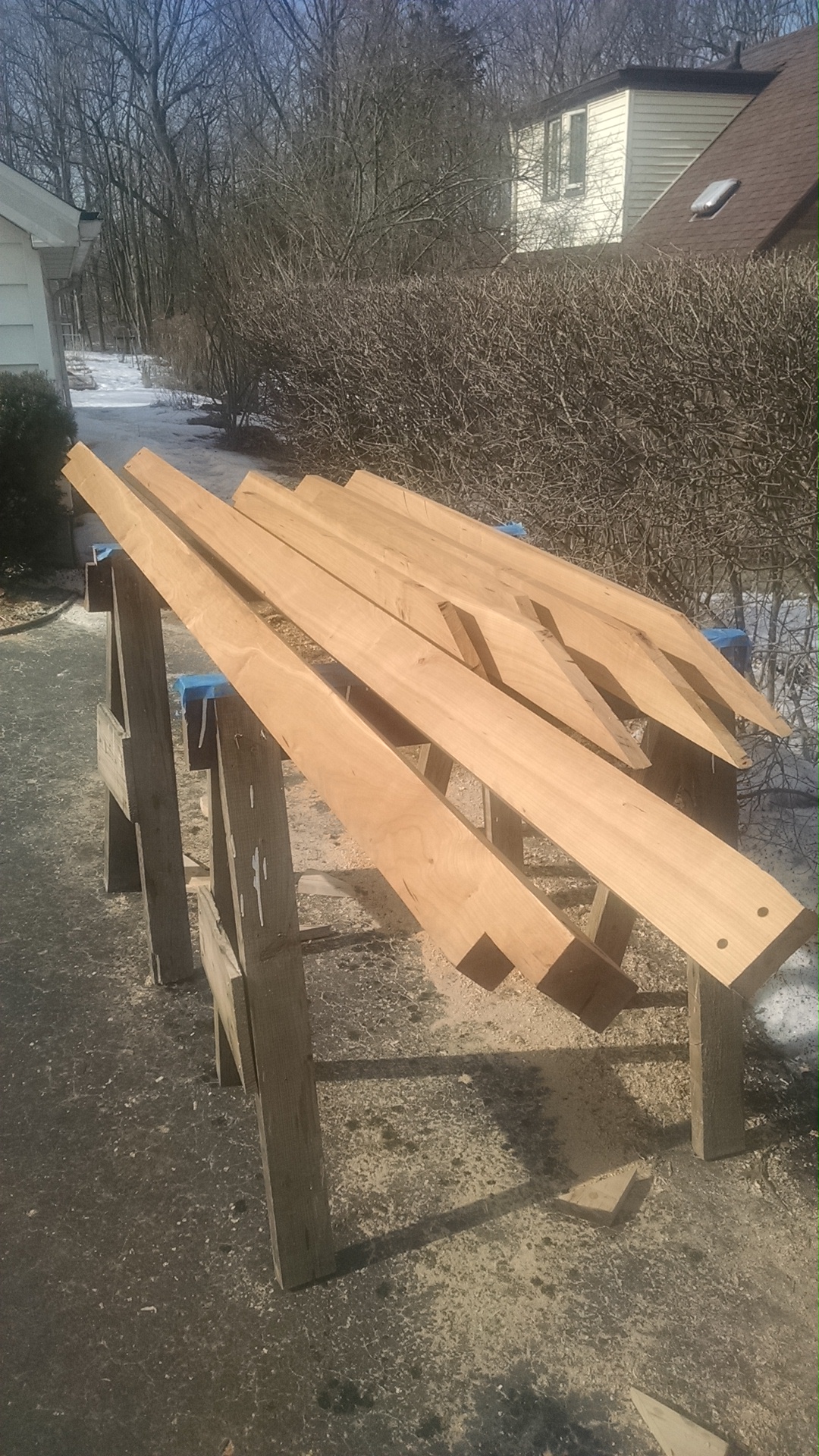 here are the loft beams and collar ties drying after a danish oil application
here are the loft beams and collar ties drying after a danish oil application
So that's the story of the tree I chopped up to build my tiny house. I really didn't use much of it at all, and still have all this wood for future projects that will probably never happen. All in all it would have been a lot cheaper and easier to buy the wood I needed, but doing it this way was kind of fun.
